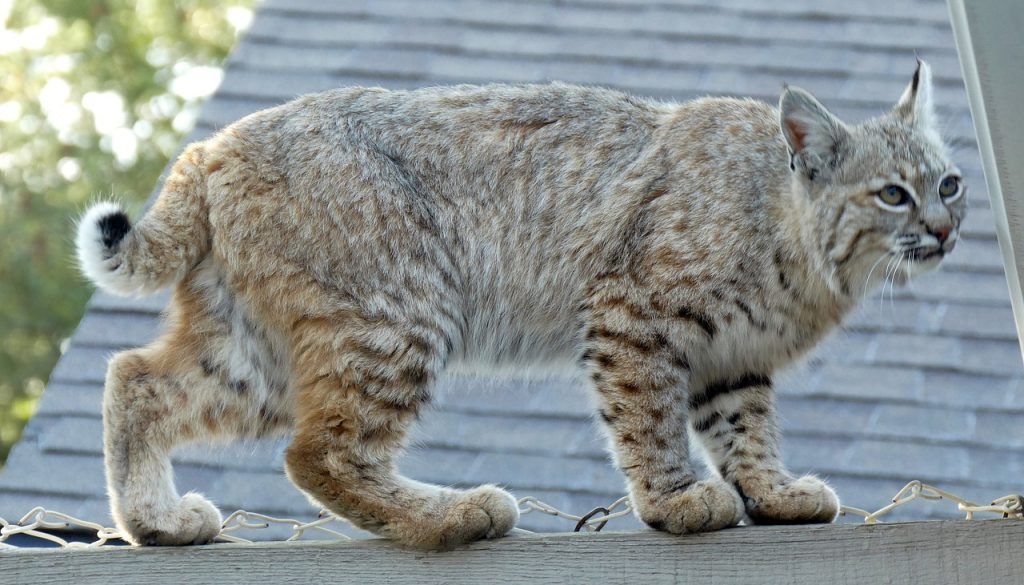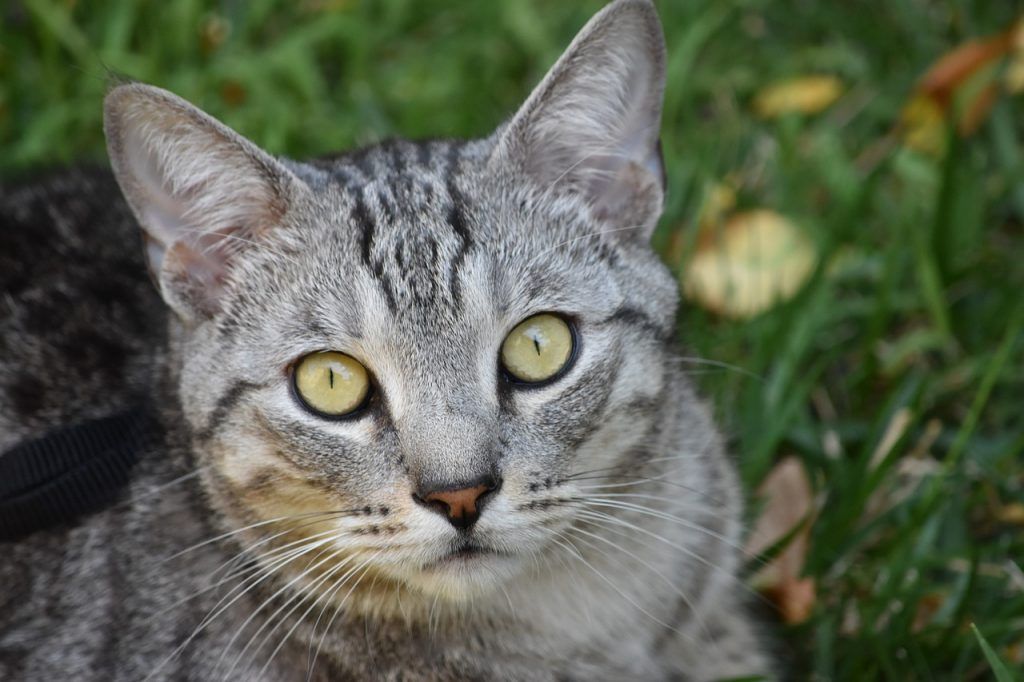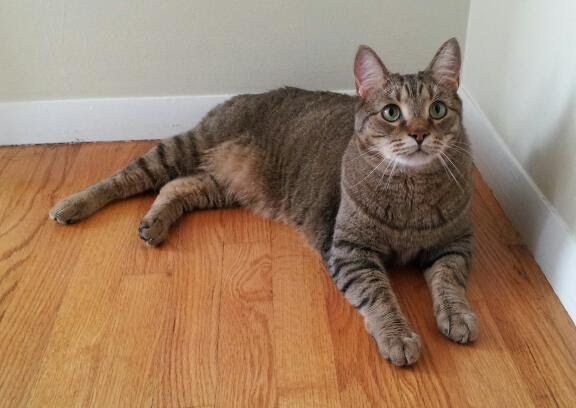Have you ever dreamed of having a wild cat as a pet? Well, you may not be able to own a real bobcat, but you can get pretty close with a Pixie Bob cat. The Pixie-Bob is a domestic cat breed that resembles a bobcat, with a short tail, a muscular body, a pear-shaped face, and tufted ears. But don’t let its wild appearance fool you. The Pixie-bob is a sweet, friendly, and loyal cat that loves to be with its family.
This article will tell you everything you need to know about the Pixie-bob cat breed, including its characteristics, history, care, and buying tips. Whether you are already a proud owner of a Pixie-bob or just curious about this unique breed, we hope you will find this article informative and helpful.
Breed Overview
| Weight | 8 to 17 pounds, some up to 25 pounds |
|---|---|
| Length | 20 to 24 inches |
| Coat Length | Long-haired or short-haired |
| Coat Colors | All shades of brown |
| Coat Patterns | Tabby with small-to-medium spots, especially on the belly |
| Eye Color | Golden brown or green |
| Personality | Easy-going, friendly, affectionate, active, and intelligent |
| Lifespan | 13 to 15 years |
| Hypoallergenic | No |
| Good with Kids | High |
| Good with Pets | High |
| Origin | United States |
History of the Pixie Bob Cat
The origin and development of the Pixie-bob breed is shrouded in mystery and legend. Some say it was the result of an accidental mating between a bobcat and a barn cat in the 1980s. Others say it was the product of careful selection and breeding by a visionary woman named Carol Ann Brewer. Here is what we know for sure.
Carol Ann Brewer purchased a short-tailed polydactyl male spotted kitten in 1985. Shortly after that, she adopted an exceptionally large male rescue cat with a bobbed tail. Rumors said that this cat was the product of a domestic cat and a bobcat mating. The cat mated with a neighbor’s brown tabby producing a litter of kittens. Brewer adopted one of the female kittens with a spotted “wild” appearance and named it Pixie.
Pixie became the foundation female for the Pixie-bob breed. Over the next several years, Brewer sought out cats with bobbed tails and spots, particularly those rumored to be products of matings between domestic cats and bobcats. She bred these cats with Pixie and other American Bobtail cats to create the Pixie-bob breed. She registered the breed with TICA in 1994 and started promoting it at cat shows and in the media. She also established the Pixie-bob Breeders Association (PBA) to maintain breed standards and ethics.
Other breeders joined her efforts and contributed to developing and recognizing the Pixie-bob in the US and abroad. In 2005, the ACFA also accepted the Pixie-bob as a recognized breed. However, the CFA still does not recognize the Pixie-bob as a breed.
The Pixie-bob is a fully domestic breed of cat that does not have any confirmed bobcat ancestry. DNA testing has failed to detect any bobcat marker genes in the Pixie-bob. However, many Pixie-bob enthusiasts still believe that their cats have some wild blood and that their appearance and personality reflect their bobcat heritage.

Appearance
The Pixie-bob is a stunning cat that can turn heads with its striking resemblance to a bobcat. But how big and heavy is this cat? And what color and pattern does it have? And what about its personality and temperament? Let’s find out.
Physical Characteristics
The Pixie-bob can be quite a large cat! Female Pixie-Bobs tend to weigh between 8-12 pounds, whereas males can clock in around 25 pounds! The Pixie-Bob is a brawny, muscular cat, which is why many breeders do believe a Coastal Red Bobcat had to be the founding father of the breed.
The Pixie-bob’s tail can range from one to six inches long but should never extend beyond the hock. The tail may be straight, kinked, or curled. The coat can be long-haired or short-haired, but it should always have small-to-medium spots, especially on the belly. The coat color can vary from all shades of brown to reddish-brown. The eyes can be golden brown or green.
One of the most distinctive traits of the Pixie-bob is its polydactyly, which means it has extra toes on its paws. Some Pixie-bobs can have up to seven toes on each foot! This gives them an advantage in climbing and hunting. However, not all Pixie-bobs are polydactyls. The breed standard allows for both polydactyl and non-polydactyl cats.

Personality and Temperament
Pixie-Bobs may have been created out of wild passion, but for the most part, Pixie-Bobs are a mellow sort of cat. Pixie-Bobs love to be with their owners, but Pixie-Bobs are not considered hyperactive by any stretch of the imagination. These cats enjoy laid-back hang sessions with the family and have been described as “dog-like” in personality. Pixie-Bobs bond very strongly with their families and love taking car rides and leashed walks with their loved ones.
Pixie-Bobs are also very intelligent and curious cats who like exploring their surroundings and learning new things. They can be trained to do tricks like fetching or opening doors. They are also very vocal cats that communicate with their owners through chirps, twitters, and occasional meows.
Pixie-Bobs are friendly and affectionate cats that get along well with children and other pets. They are not aggressive or territorial and will welcome visitors with curiosity and warmth. However, they are also independent and confident cats that can entertain themselves when left alone for short periods of time.
Pros
- Pixie-bob cats are beautiful, playful, and loyal and make good companions for almost any type of household, including those with children or other pets.
- Pixie-bob cats are hearty and healthy with no known genetic health problems and have an average lifespan of 13 to 15 years.
- Pixie-bob cats are intelligent and curious cats that can be trained to do tricks, such as fetching or opening doors.
Cons
- Pixie-bob cats are more expensive than other breeds, ranging from $800 to $3000.
- Pixie-bob cats are not hypoallergenic. They shed moderately, especially in spring and fall, and may trigger allergies in some people.
Health Care
The Pixie-bob is a hearty and healthy cat that does not require any special care. However, like any cat, it needs regular grooming, feeding, exercise, health check-ups, and social interaction to stay happy and healthy. Here are some tips and advice on how to care for your Pixie-bob cat.
Grooming
The Pixie-bob’s coat is easy to groom with weekly brushing or combing to remove dead hair and distribute skin oils. The Pixie-bob sheds moderately, especially in spring and fall. You should also trim the cat’s nails regularly, clean its ears and teeth, and check its eyes for any signs of infection or irritation.
Feeding
The Pixie-bob is a large and muscular cat that needs a high-quality diet to meet its nutritional needs. You should feed your Pixie-bob a balanced and complete cat food that is appropriate for its age, size, and activity level. You should also provide fresh water at all times and avoid overfeeding or giving too many treats.
Exercise
The Pixie-bob is an active and playful cat that needs plenty of mental and physical stimulation. You should provide your cat with toys, scratching posts, cat trees, and interactive games to keep it happy and entertained. You should also consider leash-training your Pixie-bob if you want to take it outdoors safely. The Pixie-bob enjoys exploring new places and walking with its owner.

Common Health Issues
The Pixie-bob is a healthy cat with no known genetic health problems. However, you should still take your cat to the vet for regular check-ups, vaccinations, and parasite prevention. You should also spay or neuter your Pixie-bob unless you plan to breed it responsibly. Spaying or neutering can prevent unwanted pregnancies, reduce the risk of certain cancers, and improve your cat’s behavior.
Socialization
The Pixie-bob is a social and friendly cat that thrives on human companionship. You should spend quality time with your cat every day, talking to it, petting it, and playing with it. You should also introduce your Pixie-bob to other pets and people at an early age to help it socialize well. The Pixie-bob is usually tolerant and adaptable to different situations and environments.
Where to Buy a Pixie-bob Cat
Pixie-bob cats are not particularly rare but are not as common as some other cat breeds. They are a relatively new breed, having only been around since the early 1990s, and their popularity is still growing. However, they are a rare breed in comparison to the very popular Maine Coon or Bengal, as there are only an estimated 40 active breeders worldwide and a limited gene pool.
Still, finding a Pixie-bob breeder shouldn’t be terribly difficult. Kittens can be more expensive than some breeds, ranging from $800 to $3000, depending on the quality, color, pattern, sex, and location of the kitten.
Oftentimes you can find a list of registered Pixie-bob breeders on the websites of TICA or Breedlist; you can find them here:

Conclusion
The Pixie-bob is a domestic cat breed that looks like a bobcat but has a sweet and loyal personality. It is a large, muscular cat with a short tail, spotted coat, and sometimes extra toes. They are a relatively new and uncommon breed that originated in the US from crosses between American Bobtail cats and barn cats, or possibly a bobcat and a barn cat. It is recognized by TICA and ACFA but not by CFA. DNA testing has not confirmed its bobcat ancestry, but many Pixie-bob enthusiasts still believe in its wild heritage.
We hope you enjoyed this article about the Pixie-bob cat breed. If you have any questions or comments about this breed, please feel free to share them with us in the comments section below or on our social media pages. We would love to hear from you!
Thank you for reading, and have a wonderful day!
More Cat Breeds
If you’re interested in learning about similar cat breeds, check out:
FAQ
Are Pixie-bob cats dangerous?
No, Pixie-bob cats are not dangerous. They are domestic cats that look like bobcats but have a sweet, friendly, and loyal personality. They are not aggressive or territorial and will get along well with children and other pets. However, like any cat, they may scratch or bite if provoked or mistreated.
Are Pixie-bob cats hypoallergenic?
No, Pixie-bob cats are not hypoallergenic. They shed moderately, especially in spring and fall, and may trigger allergies in some people. However, some people may be less allergic to Pixie-bob cats than to other cat breeds. If you have allergies, you should consult your doctor before getting a Pixie-bob cat.
How big do Pixie-bob cats get?
Pixie-bob cats can be quite large. Female Pixie-Bobs tend to weigh between 8-12 pounds, whereas males can clock in around 25 pounds. They are also long and muscular cats, with a length of 20 to 24 inches. However, the size of a Pixie-bob cat may vary depending on its genetics, diet, and environment.
How long do Pixie-bob cats live?
Pixie-bob cats have a lifespan of 13 to 15 years on average. They are generally healthy and hearty cats with no known genetic health problems. However, their lifespan may be affected by factors such as their diet, exercise, health care, and living conditions.
How much are Pixie-bob cats?
Pixie-bob cats can be expensive, ranging from $800 to $3000, depending on the quality, color, pattern, sex, and location of the kitten.
























